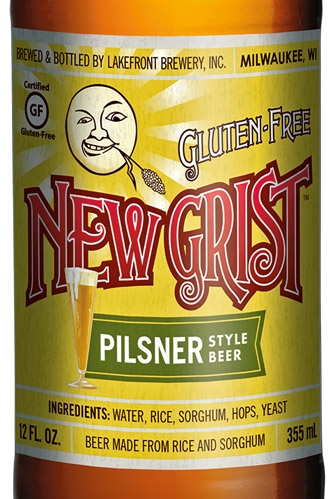Gluten Freedom
Gluten, a natural protein present in a variety of grains like barley, wheat and rye, serves to nourish plant embryos during germination. It helps to increase elasticity in dough and serves as the glue that holds together pizza dough and pastas. Unfortunately, for individuals with celiac disease and non-celiac gluten sensitivity, this protein is difficult to break down and can result in unpleasant digestive issues. For others, it may damage the intestines. Those with a gluten allergy also need to stay clear of gluten.
G-F Beers
Because celiac disease affects more than 1 in every 200 people in the U.S., there are enough consumers looking for gluten-free beers for the industry to take note. To create a completely gluten-free beer, brewers begin by using grains and sugar sources that don’t contain gluten, like sorghum, oats, corn, rice and buckwheat. For years, Anheuser-Busch has produced Redbridge, a sorghum-based beer. Today, with the rise of craft beer, other options and styles are available. Green’s Gluten-free Beers has been producing gluten-free Belgian tripel, amber ale and dubbel, and recently released an IPA and dry-hopped lager. Uinta Brewing Company will release two gluten-free beers this year under a sub-brand called Free Form, which includes a Belgian blonde ale and an IPA. You may come across a couple of other options like Joseph James Brewing’s Fox Tail and Dogfish Head’s Tweason’ale (which they no longer produce, but you may still be able to find a 4-pack). Saltwater Brewery in Delray Beach makes Free Bird, a completely gluten-free beer that’s available in their taproom. Lakefront Brewery brews their New Grist Pilsner Style beer with sorghum.
Low-Gluten Choices
Many breweries now produce “gluten-removed” or “gluten-reduced” beers. The brewer starts with normal grains, like barley and wheat, then brews the beer using a clarifying agent, which breaks down the gluten in the final product. This results in a liquid with less than 20 parts per million (ppm) of gluten, which is nearly gluten-free. For those with acute gluten allergies, it may cause an issue. But for most drinkers with gluten sensitivity, they sit well. From a flavor profile standpoint, they’re really no different from any other beer.
One of the first producers to toy with this process was Widmer Brothers Brewing, whose Omission line includes a pale ale and lager. Other producers have jumped on board, including New Belgium with their Glütiny pale ale and golden ale. Stone Brewing released Delicious IPA, a big, West coast-style IPA using lemondrop hops. Estrella Damm Daura offers a very easy-drinking imported light lager, which reportedly offers less than 6ppm of gluten. New Planet recently launched Seclusion IPA in a can, ideal to take on the boat. Local breweries Tequesta Brewing in Tequesta, Twisted Trunk in Palm Beach Gardens and Copperpoint in Delray Beach also use this process.
Try Ciders
Historically, cider was a common alcoholic beverage. Now making a resurgence, it’s naturally gluten free because its sugars come from either apple or pear juice. Classic dry or sweet ciders include Woodchuck, Strongbow and Magners. Some new unique flavors: Ace Cider’s Pineapple Cider, perfect for summertime or a pig roast. Mostly pear-based, Rekorderlig Ciders from Sweden include strawberry-lime and passionfruit. Among Sonoma Organic Ciders’ year-round offerings are Anvil, a dry cider aged in bourbon barrels, and Washboard, a sarsaparilla vanilla cider. Their seasonal lineup features blends like Crowbar, a habanero lime cider in a can. Cigar City Cider and Mead’s Homemade Apple Pie cider tastes like it came right off Grandma’s windowsill.






